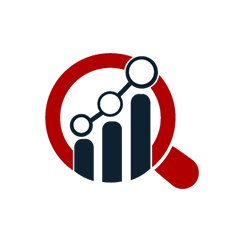Implementing effective Software Asset Management (SAM) practices is essential for organizations seeking to optimize their software assets and ensure compliance. This article outlines best practices for SAM that organizations can adopt to enhance their software management processes.
1. Establish Clear Policies and Procedures
Organizations should establish clear policies and procedures for software asset management. These policies should outline guidelines for software procurement, deployment, usage, and compliance. By providing a framework for SAM, organizations can ensure that employees understand their responsibilities and adhere to organizational guidelines.
2. Invest in SAM Tools
Implementing robust SAM tools is crucial for effective software management. These tools can automate many processes related to software tracking, license management, and compliance monitoring. Organizations should evaluate different SAM solutions and choose one that aligns with their specific needs and requirements.
3. Maintain Accurate Software Inventory
Maintaining an accurate inventory of software assets is essential for effective SAM. Organizations should regularly update their software inventory to reflect any changes in software usage, licenses, and deployments. This accuracy will help organizations track software usage effectively and ensure compliance with licensing agreements.
4. Conduct Regular Audits
Regular audits of software assets are critical for identifying potential compliance issues and optimizing software usage. Organizations should conduct audits at least annually to assess their software inventory, track license usage, and ensure adherence to licensing agreements. SAM tools can facilitate these audits by providing accurate usage data.
5. Monitor Software Usage
Monitoring software usage is essential for identifying underutilized or unused licenses. Organizations should track software usage patterns to determine which applications are essential and which can be reclaimed or reallocated. This monitoring will help organizations optimize their software licenses and reduce costs.
6. Educate Employees
Employee education is a key component of effective SAM. Organizations should provide training programs to educate employees about software usage policies, licensing agreements, and compliance requirements. This education will empower employees to make informed decisions regarding software usage and licensing.
7. Foster Collaboration Between IT and Procurement
Collaboration between IT and procurement teams is essential for effective software asset management. By working together, these teams can ensure that software purchases align with organizational needs and compliance requirements. This collaboration will also help organizations negotiate better terms with software vendors.
8. Leverage Data Analytics
Organizations should leverage data analytics to gain insights into software usage and optimize their software assets. By analyzing usage data, organizations can identify trends, assess software performance, and make informed decisions regarding software procurement and deployment.
9. Stay Informed About Licensing Changes
Software vendors frequently update their licensing agreements and terms. Organizations should stay informed about these changes to ensure compliance and avoid potential penalties. Regularly reviewing licensing agreements and vendor communications will help organizations remain compliant.
10. Plan for Software Lifecycle Management
Effective SAM involves managing software assets throughout their lifecycle, from procurement to retirement. Organizations should establish processes for software lifecycle management, including planning for software upgrades, migrations, and decommissioning of outdated applications.
Conclusion
In summary, adopting best practices for Software Asset Management is essential for organizations seeking to optimize their software assets and ensure compliance. By establishing clear policies, investing in SAM tools, maintaining accurate inventories, and educating employees, organizations can enhance their software management processes and drive operational efficiency. As the SAM market continues to evolve, organizations that prioritize effective SAM practices will be better positioned for success.
More Releted Report:
Computational Creativity Market
About Market Research Future:
At Market Research Future (MRFR), we enable our customers to unravel the complexity of various industries through our Cooked Research Report (CRR), Half-Cooked Research Reports (HCRR), Raw Research Reports (3R), Continuous-Feed Research (CFR), and Market Research & Consulting Services.
MRFR team have supreme objective to provide the optimum quality market research and intelligence services to our clients. Our market research studies by products, services, technologies, applications, end users, and market players for global, regional, and country level market segments, enable our clients to see more, know more, and do more, which help to answer all their most important questions.



